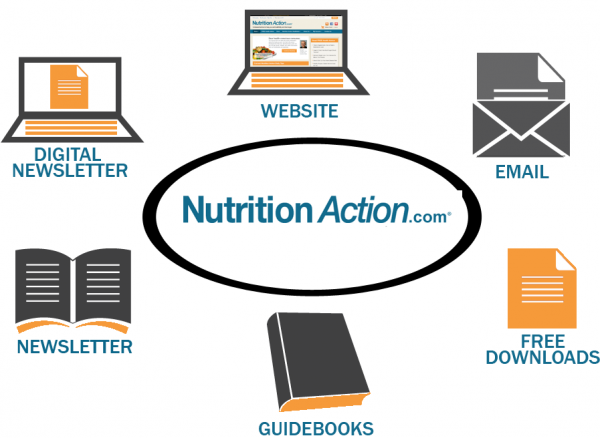Niche multiplatform publishers have seen great success in multiplatform publishing, especially when they recycle!
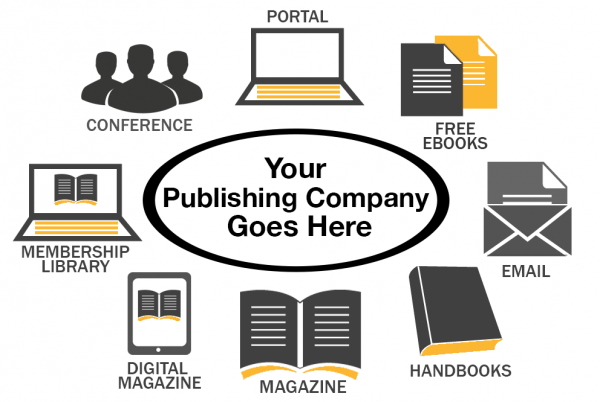
Even the smallest of magazine publishers publish on two platforms: their magazine and their website.
Mequoda publishers typically publish five to six different platforms, and within those platforms, many more sub-platforms.
Based on the fact that every platform has completely different user experiences, we came up with our idea of what this looks like, and we call it the niche media user experience dashboard — that is, what users get out of the many different platforms.
The six main platforms that a magazine company would develop: websites, emails, magazines, videos, books and events.
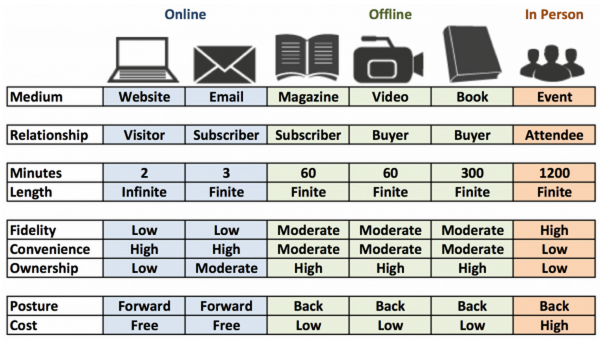
These platforms are much bigger than they look, though. Within the website platform, a publisher may offer many different types of subscription websites. They may have a blog and a magazine subscription website. Or, they may offer different types of events, like webinars and in-person conferences.
To answer your question before you ask, mobile is not part of this grid because we consider it a device type instead of a publishing platform archetype. Smartphones support all of the online and offline media archetypes, some better than others. Smartphones excel at hosting audio books and magazines and are much too small a screen to do a good job of hosting highly visual books and magazines.
This is why digital magazine consumption did not take off before the introduction of the iPad and other tablets. SmartTVs, computers, tablets and smartphones all can host all of the digital archetypes we study, but some provide a much better user experience than others. Video is best on a smartTV and magazines are best on a tablet, and understanding the different user experience by media archetype and device is key to establishing an efficient and effective digital publishing strategy.
[text_ad]
Building your multiplatform brand wheel
Some of the most successful publishers we know publish on many different platforms. When we present these case studies at our events, we create brand wheels, a concept borrowed from Time Inc. when we worked with Real Simple several years ago.
The most important thing you need to know about multiplatform publishing, and how Mequoda sees a good, effective and profitable brand wheel, is that the content is recycled across the many different platforms. For example, blog posts are recycled into reports, videos are turned into blog posts, and magazine articles are recycled into a premium library, or handbooks, or cut down into many small blog posts. Here’s a quick example:
By recycling content, a small niche publisher can build a robust multiplatform publishing company on a much smaller budget with a higher profit ratio.
A Hypothetical TIME Brand Wheel
Here’s an example of TIME, not as they exist today, but as how we believe they should evolve so advertising is only a piece of their revenue stream instead of the majority.
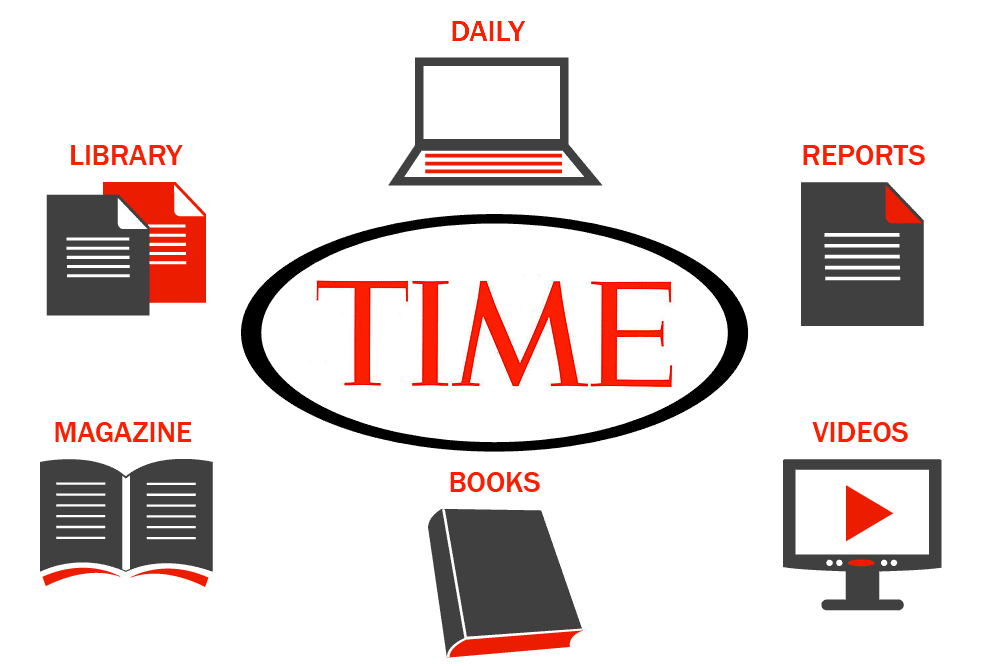
If you visit TIME.com today, you find free news soundbites and free videos. Even the archives are included in a print subscription. TIME simply isn’t selling much of anything, and, as mentioned above, it’s competing with much bigger fish for advertising.
On the new theoretical TIME brand wheel I’ve invented, the only free things at TIME.com are the portal/blog, the newsletter, and the free reports which are used to harvest email addresses. Videos, books and archives become paid, premium products along with the magazine itself. Presto: brand new revenue streams, and still no advertising required.
But once TIME has created satisfied readers and established desirable new products, advertising comes back into play. The point is to establish the appealing environment of interested, engaged readers that print publications once had before TV and the Internet, so you can get advertisers to pay you the prices you were once accustomed to before the Internet came along.
Now let’s take this down a notch into the niche publishers, who are paving the way for success in profitable multiplatform publishing.
The Harvard Health Publications Brand Wheel
The Harvard Health Publications mission has always been to improve the health and quality of life for the general public. As you might imagine, with health information, there is no such thing as evergreen content. You still need someone with a lot of expertise going through it because you never know where a change may have occurred. Still, Harvard Health Publications reuses content across their multiple platforms to create a very robust brand wheel.
Health.Harvard.edu alone gets more than 1.7 million unique visitors per month to their website, which is a hybrid of the premium newsletter subscription website archetype and the free blog subscription website archetype. (We do always say that it takes two subscription website archetypes to tango!) From there, much of their content gets recycled across their 10 platforms. Read more about Harvard’s brand wheel.
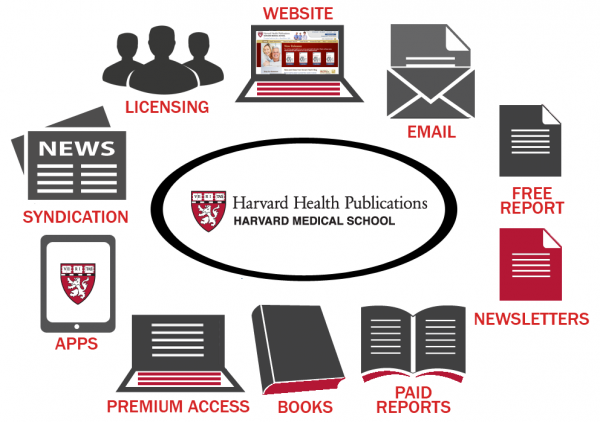
The HR Daily Advisor Brand Wheel
It’s important to note that HR Daily Advisor is just one of Business & Legal Resource’s six identically-built audience development websites. The model that BLR developed with HRDA was so successful they replicated it five more times for compensation, safety and environmental professionals. All six audience development websites look like clones but offer completely unique information and products for the niche professionals they serve.
One major strategy for which we applaud HRDA is the way they use and reuse content. Any good publisher knows how to recycle content across many platforms, and HRDA is no exception. “It’s always been our goal to repurpose content on every medium people can use,” says Rafael Cardoso, who heads up the BLR team. As you can see from the brand wheel we’ve created for them, there’s a lot of content moving around. Read more about their brand wheel.
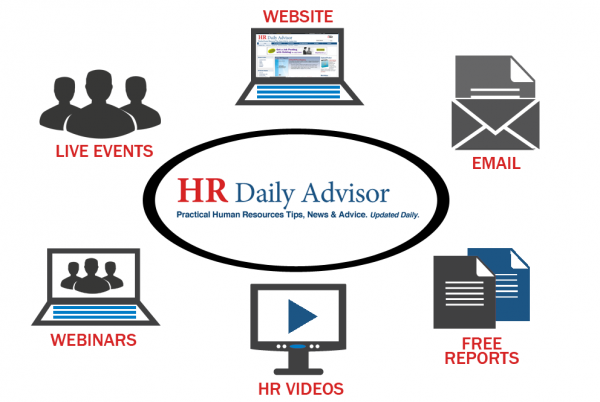
The Nutrition Action Brand Wheel
On Oct. 14, 2013, a print newsletter publisher blossomed into a multiplatform publisher. That was the day we helped relaunch NutritionAction.com, the home of a health newsletter from Center for Science in the Public Interest that’s celebrating its 40th year this month.
With the relaunch, NutritionAction.com has gone from a print newsletter publisher to a multiplatform publisher, and their results have already been dramatic. Featuring 99% recycled content from their print newsletter, they’re something of a golden child of the Mequoda Method.
In the near future, CSPI Deputy Director Bill Dugan would like to start producing virtual and in-person events. “I have big dreams of doing an annual food and nutrition consumer summit. We need to get in front of people in person.” In the longer term, he sees a mobile app in their future. Read about their brand wheel.
As a publisher, your goal is to create the best content by compiling first-person knowledge from reputable sources and making it available to your audience through your primary platform, whether it’s your magazine or your website.
You can then use your content to create other products on other platforms. Live events are the best high-fidelity user experience, with the highest price point. However, most publishers will be very comfortable producing downloadable media, like books, special reports, or video pieces. Or, if you’re The New Yorker, you ask the article writers to record their written pieces and offer them as an audio subscription.
You have plenty of content to work with, so how many platforms can you publish on?

